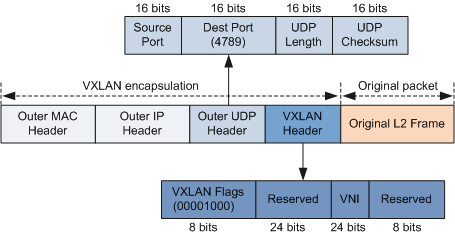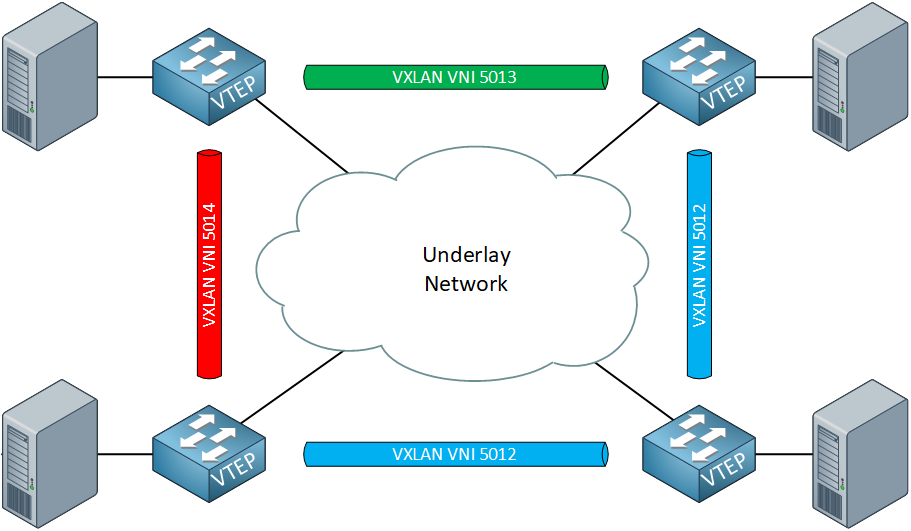Data center interconnect

Many companies need to keep the same information in two or more data centers at all times. Therefore, if an operation or any data change is performed, it needs to be reflected in the rest of the CPDs. To do this the best solution, the most used and which we will talk about today is VxLAN.
VxLAN is a protocol designed to carry Level 2 traffic across the network layer. So we start talking about transporting Ethernet frames over IP.
With the use of VLANs we had 12 bits of VLAN ID, this allowed us to make 4095 VLANs in each domain, however, now with VXLAN we have 24 bits of VNI (which would be equivalent to VLAN ID) which allows to make 16777215 segments.

As with VLANs, the traffic of one VNI is kept separate from the rest of the VNIs. IF you want to mix traffic you need a router. For this reason, VNIs are also called bridged domains.
Overlay i Underlay
VXLAN creates virtual networks on top of existing infrastructure. This makes it an "overlay" technology. The technology on which it works will be called "underlay". If you change the underlay you do not need to redesign the overlay.
The underlay infrastructure is level 3. This eliminates the need for STP and losing links. OSPF, EIGRP, IS-IS or even BGP can be managed to manage the routing.
Therefore, we can say that VXLAN is the overlay infrastructure itself. To create VNIs, traffic is encapsulated with UDP and IP before being sent.

VTEP
SWs, Routers or Hosts participating in the VxLAN have an interface called VTEP. This interface provides the connection between overlay and underlay.
Each VTEP has:
- 1 IP on the underlay network
- n VNIs
In order to be able to send information between the ends, VTEPs create stateless tunnels. This means that they only exist to deliver the VxLAN frame and once delivered are undone.
So far it is the explanation of this technology that allows the devices of the CPDs to be in constant contact and to be able to interact with each other as if they were all in the same data center.

Llorenç Garcia